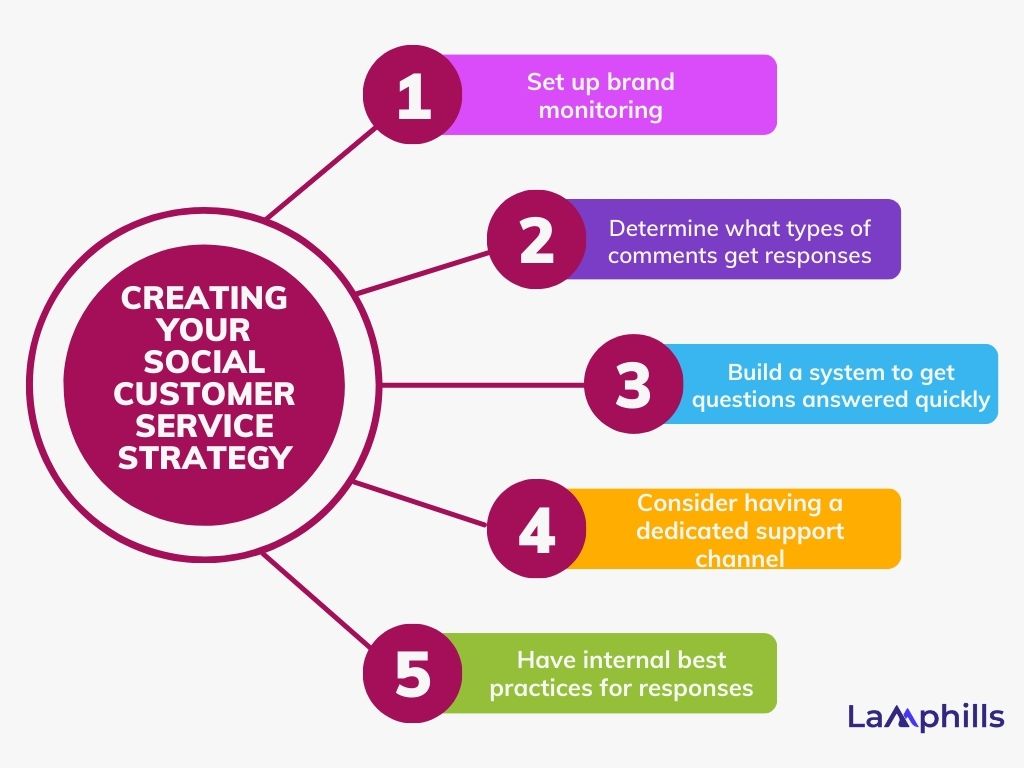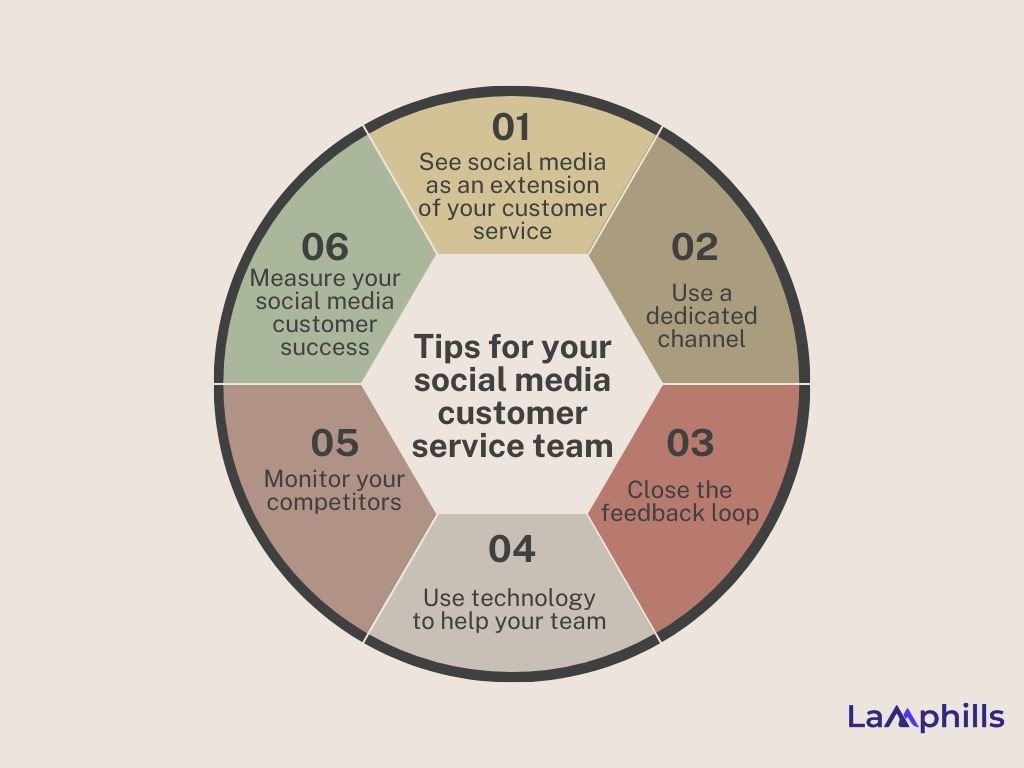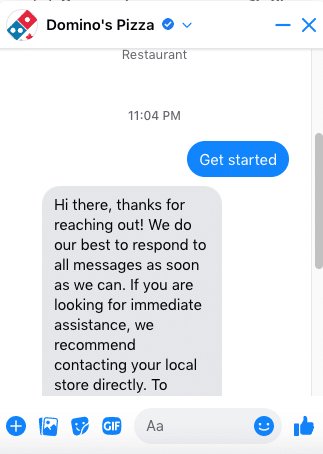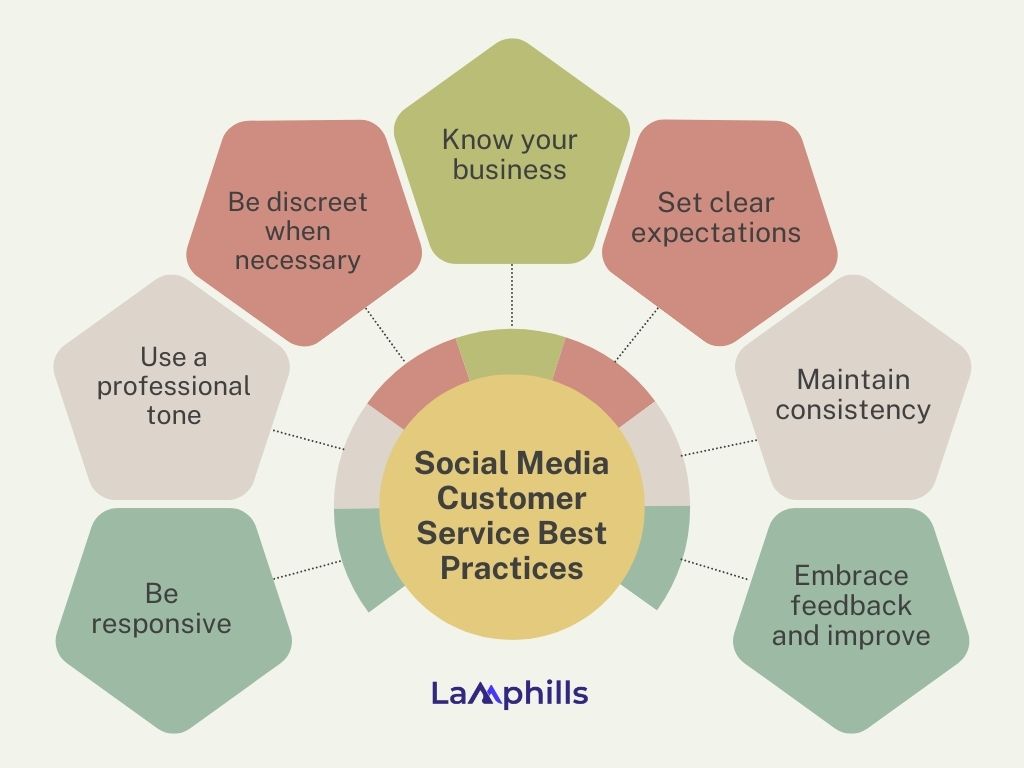Social media customer service is an invaluable tool, both for a company and its customers. What do I mean by this? Let me give an example.
A while ago, I was having a network issue with my service provider. I’d called their customer care multiple times to complain until my throat was raw, but nothing was done. My emails went unanswered. I was seriously debating going physically to their office to create a scene when someone suggested I reach out to them on social media.
So, that’s what I did. I took to Twitter (X) and dropped a post detailing my grievances, and what happened next? Their official account replied to me, asking for my details. A customer service agent reached out to me soon after, and within a few hours, my issue was resolved. After days of anguish, it was gone, just like that.
Now, you’re probably wondering why the corporation was so swift to attend to a social media post after they’d ignored calls and emails. Was it just a stroke of luck? No, that is the power of social media customer service.
Key Points
- Social media customer service is the support you offer your customers across social networks like Facebook and Instagram.
- Customers can request assistance via DM, a review site, or through their social posts.
- The time it takes to attend to that request and respond appropriately is what sets apart good from great social customer service.
- It involves not just answering queries, but actively listening and engaging with your audience.
- Social customer support is highly effective because it allows customers to reach your team on their existing platforms.
Understanding The Concept Of Social Media Customer Service
Social media customer service is the process of offering customer support on your social media channels, starting from a complaint or query all the way to a resolution. It involves not just answering queries, but actively listening and engaging with your audience.
Many companies now use social media to augment their call-based customer service activities. These include addressing complaints, answering questions, providing guidance, responding to online reviews, and even issuing refunds via social channels.
Your social media customer service plan should help you with a few different things. These include:
- Reactively solving customer problems and complaints
- Proactively providing customer support
- Creating customer delight, and
- Cultivating a brand known for something positive and inspirational (instead of just complaints).
With a social media customer service plan, you’ll have dedicated support reps monitoring and answering social media complaints, questions, and concerns.
Social Media Customer Service Stats
Why should you incorporate social media customer service solutions into your business plan? It’s simple: People want brands to offer social media customer support. Here are some stats that back this up:
- People and businesses exchange 20 billion messages a month on Facebook Messenger alone
- Social media messaging grew 110% over the pandemic as the preferred method of customer service communication
- 49% of organizations make social customer service the responsibility of the marketing team
- 40% of consumers expect brands to problem-solve in the channels of their choice (e.g., Instagram Messenger)
- 53% of respondents in a Facebook IQ survey reported that they’re more likely to buy from a company that offers customer service via chat (such as WhatsApp)
- Messaging channels reduce the cost of customer interaction by 60%
- Live Chat is the preferred digital communication tool for 43% of customers
- 50% of consumers say that a timely response to their customer-service questions influences their decision to make a purchase
- Consumers spend 20-40% more with companies that are responsive to questions and complaints on social media
- 40% of consumers expect a response within an hour when they reach out to a brand on social media; 79% expect to hear within 24 hours
- 80% of customers wish that companies responded more quickly to customer service problems
- 47% of consumers have increased their usage of digital communication tools this past year
- 59% of consumers are willing to pay a premium in order to receive ‘outstanding’ customer service
- 40% of consumers say having multiple options for communicating is the most important customer service feature for a business
- 77% of people agree that good customer service is vital to earning their brand loyalty
You need an overall social customer service strategy before you incorporate social channels into your existing customer service operations. Considering that 63% of successful companies align all their business units to the overall corporate strategy, that’s the only way to ensure effective and efficient implementation.
A comprehensive social media strategy should feature these 6 key components for customer service:

1. Set up brand monitoring
The first step is setting up an active brand monitoring system within the social media platforms your customers use to reach out to you.
You can do this conveniently using social media tools. Customize the brand monitoring tools with streams to identify and list posts and comments with specific words. This helps you quickly narrow down to the most relevant content.
For instance, you can set up a stream for any mention of your brand with positive or negative words. To pick out questions, set up a stream for content with your brand name and a question mark. That was what the network provider in my example above did, which allowed them to quickly pick up on my post and attend to it.
Having various streams helps you segment customer concerns so you can prioritize urgent issues.
2. Determine what types of comments get responses
Obviously, you won’t respond only to positive comments while disregarding negative ones. But sometimes, the way you manage a negative comment can actually win over new customers.
However, since social media isn’t really a dedicated customer support platform, you’ll get many more comments beyond what your customer support team should handle. Ideally, you want to avoid your social support team getting dragged into conversations unrelated to your business but still maintain reasonable engagement with your customers.
Above all, avoid feeding the trolls.
To manage this, create a priority list so your team can give extra attention to the most urgent and critical issues. Train all team members on how to handle both positive and negative comments and give clear guidelines on what to say when they do respond.
The need for social media customer service can be mitigated by customer Q&A on your website.
That said, engagement of any kind on social media can help take the temperature of brand sentiment and find and cultivate potential brand ambassadors. It can also remedy disenchanted customers before they create a ‘social problem.’
3. Build a system to get questions answered quickly
With how fast the internet is, a late answer can be as bad as no answer at all. Your goal should be to get questions answered as soon as customers ask them. This requires a carefully organized system with dedicated social customer care members.
Segment responsibilities across different social networks and ensure there’s a clear process for how every issue is investigated and replied to. Set up a system that unifies all customer issues in one place and assigns specific messages to particular team members.
This enhances the efficiency and speed of resolving customer issues, unlike having to manage multiple social media platforms.
4. Consider having a dedicated support channel
Apart from having a dedicated social customer support team, you can have a dedicated customer support channel within the social media platforms. In your social media accounts, direct customers who need assistance to your support profile.
This will reduce the challenge of tracking specific customer queries and also provide a reference platform where customers can evaluate past queries similar to theirs.
Most of all, a separate support channel will help segment your social media content marketing efforts and customer services.
Be a social guru. Make sure your brand is set up and using the following: Twitter, Facebook and Instagram. If you have a social strategy and are implementing it, kudos to you, but if you don’t, at the very least you can use these social channels to give updates and superb customer service.
That being said, below is a checklist of strategies you can use to set up good customer service on social media:
How to have good customer service on social media
5. Have internal best practices for responses
Customer support isn’t just about solving customer issues. It’s a key tool in building your brand image. To achieve this, you need internal best practices that ensure your support team delights customers beyond solving their problems.
Best practices ensure your customer service appears not only professional but also friendly and approachable. Clear guidelines prevent intentional or accidental bias in your teams’ responses, which can give your company a bad impression.
Instead of having just one or two people responsible for handling your social media channels, why not use the entire workforce? Develop a culture where employees act as brand advocates and respond to or comment on posts/queries related to your brand. You can even ask some of your employees to handle your social media platforms on a rotational basis.
This will not only improve customer service but will also help with employee engagement.
Above all, your responses will be consistent regardless of the type of client you’re dealing with.
Tips For Your Social Media Customer Service Team

1. See social media as an extension of your customer service
Chances are, if you’re getting excellent feedback about your customer service on your other channels, you know what you’re doing when it comes to dealing with support requests and customer assistance.
However, your social media accounts need to be tailored to your business if you’re going to provide great social customer service. There aren’t support tickets built into customer comments, so you’ll need to use social media monitoring tools and other useful ways of managing your social media platforms and the customer inquiries you receive.
2. Use a dedicated channel
Given that your customers will expect quick responses to their direct messages and social posts mentioning you, it’s much easier to have a dedicated channel for customer service requests. A separate social media account that’s still on-brand and recognizable as being for your business means that you can spot and respond to customer messages faster.
3. Close the feedback loop
Closing the social media customer feedback loop means reviewing and preparing for private messages and social posts that you’ll receive.
You should ideally:
- Collect feedback. Understanding how you’re doing means asking the customer for their view and analyzing their other unsolicited forms of feedback. Only with feedback will you be able to understand how to improve.
- Have rules and protocols in place. Make it easier on your support team by giving them canned responses to save time, guides on how to direct customers to the right services, and training in how to respond in a brand-appropriate way on social media.
- Give the right cases to the right people. As with case management handled by telephone, email, or chat, it’s best to send customers to those they already have a connection with or are senior enough to handle a serious problem.
- Respond on the platform of their choice. It might be fine to follow up on an email with a phone call, but if someone leaves positive or negative words on a social media platform, you should be able to respond on that same channel.
4. Use technology to help your team
Rather than leaving it to your team to manually find and flag issues, use technology to help your customer service reps quickly see the sentiment of messages being sent and brand mentions being made.
Using text analysis powered by advanced natural language understanding can cut down the time your customer service team needs to spend monitoring and increase the time they spend dealing with issues.
5. See how other brands are doing it right, and replicate the formula
Sometimes it’s not about reinventing the wheel for excellent customer service – it’s about seeing what other brands do well and replicating the formula.
Tiffany and Co., for example, does a great job of making sure their social media channels feel like a natural extension of their brand and their brand experience.

Adobe has a separate customer care channel that not only answers a customer complaint but also provides handy tips for their users that might help avoid common issues being brought up.
Dominos has gone one step further and created a facility for ordering their pizzas via social media, turning it into a sales channel as well as a customer care channel.
6. Measure your social media customer success and see the wider picture
Measuring your social media customer service should form part of a wider CX program of measuring customer success. Aside from the usual social media metrics to measure – engagement, follower count and more – you should also be measuring your customer satisfaction for this particular touchpoint.
You can deploy customer satisfaction surveys after your interactions on social media channels directly in the messages between the customer and your customer service reps.
Let’s take a look at five advantages of social media customer service:
Accessibility and Convenience
Offering customer service through social channels makes life a lot easier for your customers, empowering them to get answers to their questions and solutions for problems quickly and conveniently that suit them.
Reduces Costs
Responding to customers on social media can reduce the overall cost of customer service delivery, giving people quick resolutions or directing them to self-serve resources, so that fewer cases are passed to the customer service department.
Builds Brand Equity
By delivering excellent customer care in social media, your business is proving that it puts customers first in the most visible way possible. People can see that if they have a problem with any of your products or services, your company can be trusted to put it right.
Data and Insights
Social media customer service produces a lot of data about your customers and their relationship with your brand and products. This data can be harnessed in different ways to generate insights that could lead to improved products and better-targeted marketing campaigns.
Crisis Management
Many potential crises can be averted entirely by swiftly responding to customer service issues raised on social media. If a brand crisis does begin to blow up, social media customer service can help mitigate it by quickly answering questions, addressing misinformation, and reassuring customers that your business is handling the problem.
High Visibility
While showing off your commitment to customer service in public can be a positive, things are also very visible when they don’t go so well. For example, your team might struggle to placate a particularly upset customer or to resolve a difficult issue. In these situations, it’s important to escalate quickly and resolve the issue as soon as possible.
Volume of Requests
For larger brands especially, the volume of requests for customer service in social media can be huge, making it an unwieldy problem to handle. The problem can be addressed with the right social media customer service tools, which will make managing the volume much easier, but also appropriate staffing levels and well-planned processes.
Trolling
A common challenge for social media managers is dealing with trolls in their owned channels. This can take many shapes, from harmless jokers trying to have a little fun at a brand’s expense, to more vicious attacks from people who possibly have some real or imagined grievance. Appropriate training and processes are the best way to deal with this.
Operational Silos
When a business begins to offer social media customer service, there’s a risk of a disconnect between that team and the existing customer service function. This means you end up with two teams working at cross-purposes.
Integrating your social media management solution with your CRM platform (e.g. Salesforce) is a good way to tackle this.
Customer Expectations
When communicating with a brand via social media, customers can often expect a much faster response than they would after using an email or online form for a similar request. Depending on your resourcing, this can be unrealistic. Set expectations in your support channel profile, stating hours of operation and typical response times.
Examples of Social Media Customer Service
Let’s look at how companies use social media for customer service with some real-world examples.
Spotify
The music-streaming app Spotify fills its Twitter feed with how-to guides that address common questions… like how to make collaborative playlists. These preemptive FAQ posts double as a message board for users to share related problems.
In a best-case scenario, someone who’s having trouble with a shared playlist may even find an appropriate solution from someone else who shared a similar issue.
Want to make playlists with your friends? Check out our easy step-by-step guide ⬇️ and learn how to collaborate and listen together. Get to know Spotify better by following the Spotify Tips+Tricks podcast: https://t.co/WeTVzr0BMu pic.twitter.com/kfVkCquUrF
— SpotifyCares (@SpotifyCares) February 23, 2023
Domino’s Pizza
Any pizza chain worth its salt has to be ready to serve a late-night crowd, so it makes perfect sense that the brand would invest in a chatbot to deal with grumpy 11 p.m. pizza questions. Send a Facebook Messenger note, and you’ll receive an instant reply reassuring you that a real person will be in touch soon but that a human is available by phone if you need assistance immediately.
The auto-response also addresses Domino’s most common questions: how to order a pizza and how to send a complaint.

Adobe
AdobeCare is Adobe’s dedicated customer support account on Twitter. Not only does its profile description point users to the support forum (“Need additional help? community.adobe.com”), but it also has a pinned tweet right at the top of the page that points to three different ways to get more help.
Need a hand? We’re here to help! @/📩
— Adobe Care (@AdobeCare) December 9, 2022
-Check out the official Help Center 👉 https://t.co/R0nr73NoV4
-Visit our Community Forums page for more discussions ➡️ https://t.co/f8Ncnj9Hsk
-For our Server Status & more → https://t.co/ILcKyJd79n

While all of this might sound challenging, the good news is that social media customer service has been around for long enough for early adopters to learn the hard lessons on behalf of everybody else. This means you can also benefit from their experience.
Here are some best practice tips to employ in your own social media customer service efforts.
- Be responsive. People tend to use social media as a customer service channel because they want a quick response, so even if you can’t provide a full resolution straight away, at least acknowledge that they’ve been heard and will get an answer soon.
- Use a professional tone. It can be tempting to use a casual tone on social media, but remember to stay in your brand voice and keep things business-like. Also avoid over-familiarity, as this can annoy customers, especially if they have a complaint.
- Be discreet when necessary. Providing positive customer experiences in a public channel is good. However, when things aren’t going well, or sensitive topics are involved, it’s often better to move a discussion to a more private channel.
- Know your business: Make sure your social media customer service team is kept up to date on the business and its products, so they can more readily understand customer concerns and offer better support.
- Set clear expectations. Communicate expected response times and next steps with customers. If a resolution will take time, make sure they have a realistic estimate of how long they can expect to wait.
- Maintain consistency. Ensure that your customer service interactions are consistent in tone and style across different social media platforms. This helps position your brand as one that is reliable and dependable.
- Embrace feedback and improve. Encourage customers to provide feedback on their social media service experiences. Use this feedback to improve your processes and social media customer service strategy. Also, use data and analytics to monitor the performance of your social media customer service team.
Recommended Articles
- What Does Evergreen Mean In Business? Timeless Tactics for Lasting Growth
- Unlocking the Power of Brand Equity: A Comprehensive Guide
- How Can You Protect Yourself On a Social Networking Site?
- 10 BEST SOCIAL MEDIA MONITORING TOOLS IN 2024






